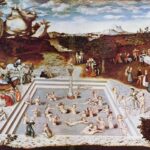According to the Central Intelligence Agency’s World Factbook, the worldwide human death rate averages nearly 8 per 1,000 in population. With over six billion people on the planet, that’s about 55.3 million deaths per year — 151,600 a day, and nearly 2 per second. That’s a lot of bodies to dump.
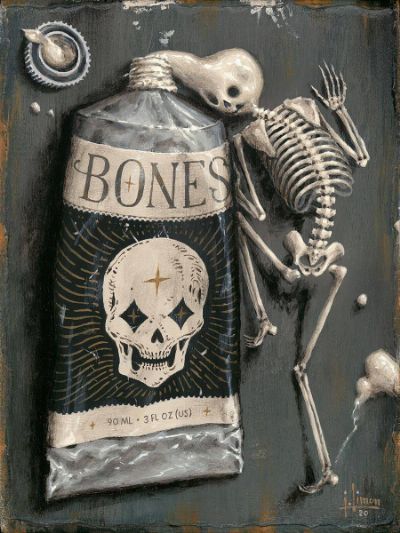
There are many ways that human bodies have been disposed of, in ways that range from reverent to expedient. Practices relating to the disposal of corpses vary widely depending on culture, religion, and jurisdiction.
According to the National Funeral Directors Association, the majority of Americans (56 percent) say they plan to be cremated, and most of the rest choose traditional burial.
The problem of body disposal has two parts: disposal of the soft tissues, which will rapidly decompose, and of the skeleton, which will remain intact for thousands of years under the right conditions.
In most cultures, before the onset of significant decay, the body undergoes some type of ritual disposal, usually either cremation or deposition in a tomb that is often a hole in the ground called a grave, but may also be a sarcophagus, crypt, sepulchre, or ossuary, a mound or barrow, or a monumental surface structure such as a mausoleum (exemplified by the Taj Mahal). The body can be inhumated, cremated or embalmed then either burried, stored in mausoleum, scattered or destroyed.
In Tibet, one method of corpse disposal is sky burial, which involves placing the body of the deceased on high ground (a mountain) and leaving it for birds of prey to dispose of. Sometimes this is because in some religious views, birds of prey are carriers of the soul to the heavens, but at other times this simply reflects the fact that when terrain (as in Tibet) makes the ground too hard to dig, there are few trees around to burn and the local religion (Buddhism) believes that the body after death is only an empty shell, there are more practical ways of disposing of a body, such as leaving it for animals to consume. The Parsis community in India leave the corpses exposed to the rays of the sun, and devoured by birds of prey — vultures, kites and crows.
In certain cultures, efforts are made to retard the decay processes before burial (resulting even in the retardation of decay processes after the burial), as in mummification or embalming. This happens during or after a funeral ceremony. Many funeral customs exist in different cultures. In some fishing or navy communities, the body is sent into the water, in what is known as burial at sea. Several mountain villages have a tradition of hanging the coffin in woods.
A new alternative is ecological burial. This is a sequence of deep-freezing, pulverization by vibration, freeze-drying, removing metals, and burying the resulting powder, which has 30% of the body mass.
Space burial uses a rocket to launch the cremated remains of a body into orbit. This has been done at least 150 times.
Burial
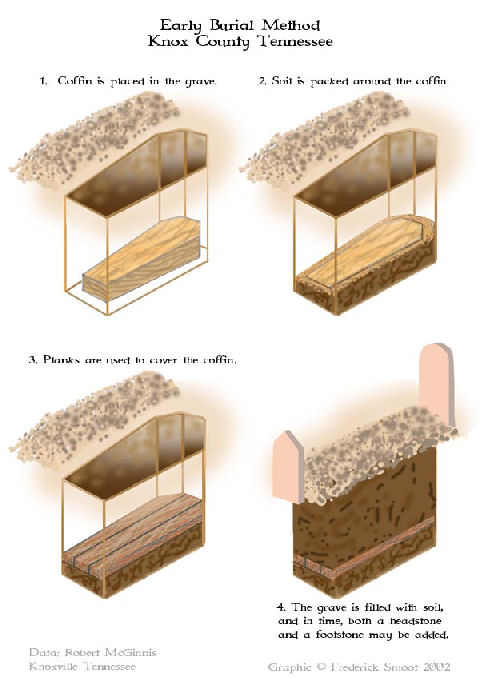
Burial, also called interment and (when applied to human burial) inhumation, is the act of placing a person or object into the ground.
Usually, this is accomplished by digging a pit or trench, placing the person or object in it, and refilling it with the soil that was dug out of it.
In many human cultures throughout history, human corpses were usually buried in soil. Burial grounds have been uncovered all over the world. Mounds of earth, temples, and underground caverns were used to store the dead bodies of ancestors. Different cultures bury their dead in different ways. Some of these practices are heavily ritualized; others are simply practical.
In modern times, the custom of burying dead people below ground with a stone marker to mark the place is used in almost every modern culture, although other means such as cremation are becoming more popular in the west (cremation is the norm in India).
Humans are not the only species to bury their dead. Chimpanzees and elephants are known to throw leaves and branches over fallen members of their family groups.
Reasons for human burial
After death, the corpse will start to decay and emit unpleasant odors due to the gases released by bacterial decomposition. Burial prevents the living from having to see and smell the corpses, but is not necessarily a public health requirement. Contrary to conventional wisdom, the WHO advises that only corpses carrying an infectious disease strictly require burial
Various human burial practices seek to demonstrate “respect for the dead”, for the following reasons.
- If left lying on top of the ground, scavengers may eat the corpse, which is considered highly disrespectful to the deceased in many (but not all) cultures.
- Burial can be seen as an attempt to bring closure to the deceased’s family and friends. By interring a body away from plain view, the pain of losing a loved one to death can likewise be lessened.
- Many cultures believe in an afterlife. Burial is often believed to be a necessary step for an individual to reach the afterlife.

Prevention of decay
Embalming is the practice of preserving a body against decay, and is used in many cultures. Mummification is a form of embalming that is often more extensive, further retarding the decay process.
Bodies are often buried wrapped in a shroud or placed in a coffin (also called a casket). A larger container may be used, such as a ship. Coffins are usually covered by a burial liner or a burial vault, which protects the coffin from collapsing under the weight of the earth or floating away during a flood.
These containers slow the decomposition process by (partially) physically blocking decomposing bacteria and other organisms from accessing the corpse. An additional benefit of using containers to hold the body is that if the soil covering the corpse is washed away by a flood or some other natural process, the corpse will still not be exposed to open air.
In some cultures however the goal is not to preserve the body but to allow it to decompose — or return to the Earth — naturally. In Orthodox Judaism embalming is not permitted, and the coffins are constructed so that the body will be returned to the Earth as soon as possible. Such coffins are made of wood, and have no metal parts at all. Wooden pegs are used in the place of nails. Followers of the Islamic faith also prefer to bury their deceased so as not to delay decomposition. Normally, instead of using coffins the deceased are buried in a shroud, and the bodies of the deceased are not normally embalmed.
Inclusion of clothing and personal effects
The body may be dressed in fancy and/or ceremonial clothes. Personal objects, such as a favorite piece of jewelry or photograph, of the deceased may be included with the body. This practice, also known as the inclusion of grave goods, serves several purposes:
- In funeral services, the body is often put on display. Many cultures feel that the deceased should be presented looking his/her finest.
- The inclusion of ceremonial garb and sacred objects is sometimes viewed as necessary for getting to the afterlife.
- The inclusion of personal effects may be motivated by the beliefs that in the afterlife a person will wish to have with them what was important to them on earth. Alternatively, in some cultures it is felt that when a person dies, their possessions (and sometimes people connected to them such as wives, see sati) should go with them out of loyalty or ownership.
- Though not generally a motivation for the inclusion of grave goods with a corpse, it is worth considering that future archaeologists may find the remains. Artifacts such as clothing and objects provide insight into how the individual lived. This provides a form of immortality for the deceased.
Body positioning
Burials may be placed in a number of different positions. Christian burials are made extended, i.e., lying flat with arms and legs straight, or with the arms folded upon the chest, and with the eyes and mouth closed. Extended burials may be supine (lying on the back) or prone (lying on the front). Other ritual practices place the body in a flexed position with the legs bent or crouched with the legs folded up to the chest. Warriors in some ancient societies were buried in an upright position. Many cultures treat placement of dead people in an appropriate position to be a sign of respect even when burial is impossible.
In nonstandard burial practices, such as mass burial, the body may be positioned arbitrarily. This is a sign of disrespect to the deceased, or at least nonchalance on the part of the inhumer.
With life and death being a way of life in the African-American slave community, slaves quickly familiarized themselves with funeral procedures and the location of grave sites of family and friends. Specific slaves were assigned to prepare dead bodies, build coffins, dig graves, and construct headstones. Slave funerals were typically at night when the workday was over, with the master present to view all the ceremonial procedures. Slaves from the nearby plantations were regularly in attendance.
At death, a slave’s body was wrapped in cloth. The hands were placed across the chest, and a medal plate was placed on top of their hands. The reasoning for the plate was to hinder their return home by suppressing any sprits in the coffin. Often, personal property was buried with slaves to appease spirits. The coffins were nailed shut once the body was inside, and carried by hand or wagon, depending on the property designated for slave burial site. Slaves were buried east to west, with the head facing east and their feet to the west. This positioning represented the ability to rise without having to turn around at the call of Gabriel’s trumpet. Gabriel’s trumpet would be blown in the eastern sunrise. East-West positioning also was the direction of the home, Africa.
Cremation
Cremation is also an old custom; it was the usual mode of disposing of a corpse in ancient Rome (along with graves covered with heaped mounds, also found in Greece, particularly at the Karameikos graveyard in Monastiraki). Vikings were occasionally cremated in their longships, and afterwards the location of the site was marked with standing stones. Among Hindus, Jains, Sikhs and some sects of Buddhists such as those found in Japan, cremation is common.
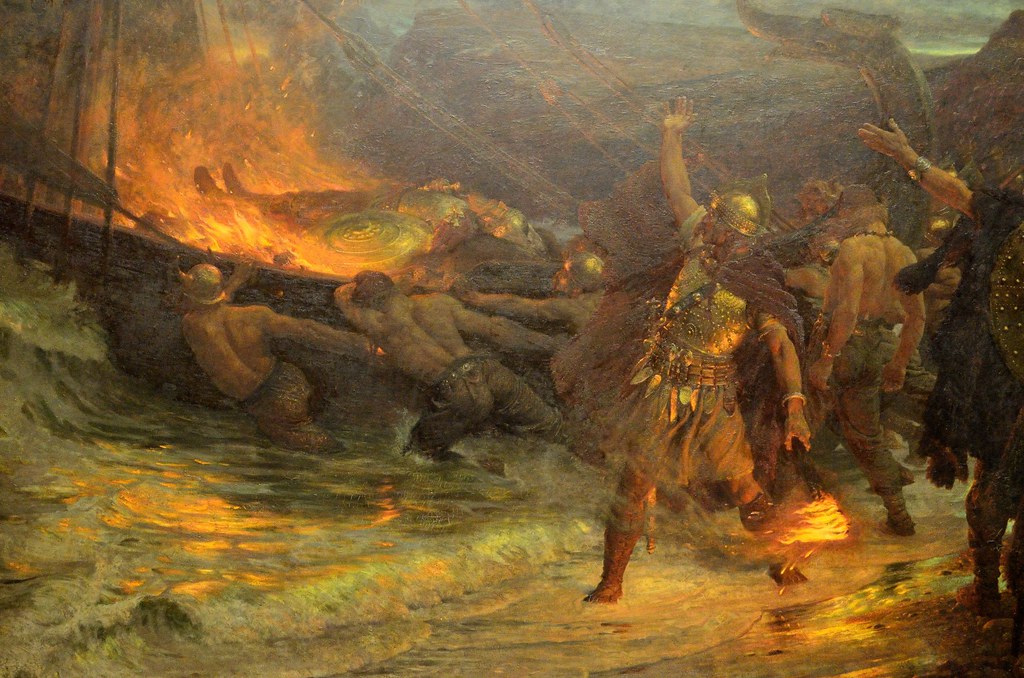
In cremation the body of the deceased is burned in a special oven. Most of the body is vaporized during the cremation process, leaving only a few pounds of bone fragments. Often these fragments are processed (ground) into a fine powder, which has led to cremated remains being called ashes. In recent times, cremation has become an increasingly popular option in the western world.
There is far greater flexibility in dealing with the remains in cremation as opposed to the traditional burial. Some of the options include scattering the ashes on the ground or in a body of water, or keeping the ashes at home. Ashes can also be buried either underground or in a columbium niche.
The identity of the deceased is immediately evident in the corpse and can readily evoke emotion. Ashes tend to be a more distanced, less personal representation of the deceased. Issues relating to the body itself are reasons people give for opposing as well as for favoring cremation. Those who oppose cremation voice concerns over cremation’s destruction of the body. Since most religious ideologies no longer express a belief in physical resurrection, or do not view cremation as incompatible with resurrection uneasiness with incinerating the corpse results, in part, from the value placed on human dignity and respect for the dead.
In Western cultures, fire is associated with predominately negative, even punitive, images (witch burning, Holocaust cremations, obliterating enemies), rather than the positive associations of purification and freedom which predominate in Eastern cultures. In this Western cultural milieu, those who strongly identify the corpse with the living person perceive cremation as cruel, destructive, and disrespectful. Some people who support cremation do not want the body decomposing in the earth. Their disgust with the mental images of decay, and literal images when exhumation is necessary or inadvertent, are associated with a lack of dignity and respect. Other people in western countries, most often highly educated, perceive the rapid disposal of the corpse by fire as liberating the self rather than destroying the self.. They are more likely than the less educated to identify their self with their mind than with their body .
“The most sickening aspect of death is the socially created ritual surrounding it. My body is no beauty but my companion and my servant. I therefore loathe the thought of its purposeless destruction by autopsy, or worse still, at the hands of the ghouls known as morticians. I strongly endorse immediate cremation. Funerals are the height of hypocrisy. I believe it cruel to put one’s survivors through such a ritual” (Shneidman 1971).
Cremation is the incineration of the remains.
Other methods of disposal
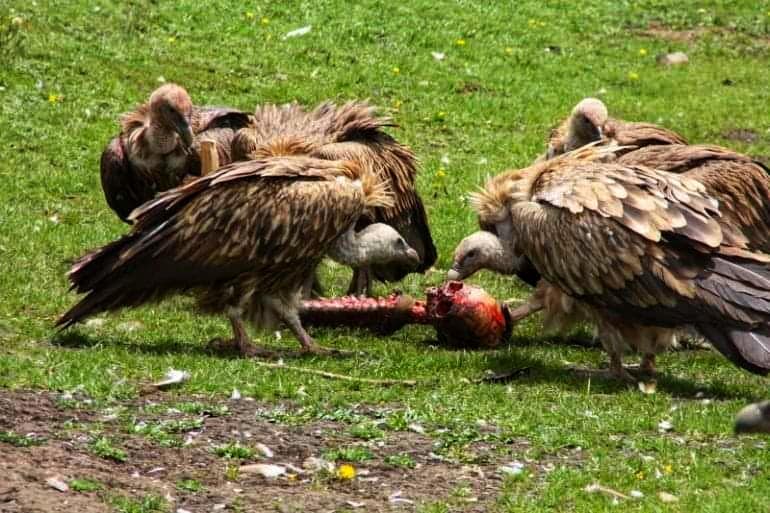
Human bodies are not always buried, and many cultures may not bury their dead in every case. Alternatives to burial include the following. In most cases these alternatives are still intended to maintain respect for the dead, but some are intended to prolong the display of remains.
- Burial at sea is the practice of depositing the body in an ocean or other large body of water instead of soil. It may be disposed in a coffin, or without one.
- Funerary Cannibalism is the practice of eating the remains. This may be for many reasons: for example to partake of their strength, to spiritually “close the circle” by reabsorbing their life into the family or clan, to annihilate an enemy, or due to pathological mental conditions.
- Cryonics is the cold storage of the remains.
- With promession, the corpse is frozen at 0 degrees Fahrenheit (-18 Celcius) and then placed in a vat of liquid nitrogen where the temperature drops to -320 Fahrenheit (-196 Celcius). A mechanical device vibrates the body which disintegrates in minutes, then the material is freeze-dried in a vacuum chamber, removing the water and reducing the weight to thirty percent of the original mass. Metals such as fillings and artificial devices are picked-out then the dry powder is placed in an urn and returned to the family.
- Taxidermy; an extremely rare form of preserving a human body. Famous historical examples include an African tribesman, and sideshow performer Julia Pastrana. A few people, such as the economist Jeremy Bentham, have had their dead bodies stuffed.
- Plastination: The preserved (embalmed) body is prepared by dissection or slicing and fluids are replaced with inert plastic for anatomical study by medical students or display in museums. This technique was pioneered by Gunther von Hagens of the Institute for Plastination.
- Excarnation is the practice of removing the flesh from the corpse without interment. The Zoroastrians have traditionally left their dead on Towers of Silence, where the flesh of the corpses is let to be devoured by vultures and other carrion-eating birds.
- Gibbeting was the ancient practice of publicly displaying remains of criminals.
- Hanging coffins are coffins which have been placed on cliffs. They can be found in various locations, including China and the Philippines.
- Sky burial involves placing the body on a mountaintop.
- Space burial is the practice of firing the coffin into space. The coffin may be placed into orbit, sent off into interstellar space, or incinerated in the sun. Space burial is still largely in the realm of science fiction as the cost of getting a body up into space is currently prohibitively large, although several prominent figures have had their ashes launched into space after cremation.
- Dissolution involves the breaking down of the body by solvation, e.g. in acid or a solution of lye, followed by disposal as liquid. A specific method is alkaline hydrolysis (also called Resomation). Advocates claim the process is more environmentally friendly than both cremation and burial, due to CO 2 emissions and embalming fluids respectively.
- With aquamation, or “alkaline hydrolysis”, the body of the deceased is immersed for three to four hours in a mixture of water and a strong alkali, such as potassium hydroxide, in a pressurized metal cylinder and heated to around 150C. The process liquefies everything except for the bones, which are then dried in an oven and reduced to white dust, placed in an urn and handed to relatives.
Eco-friendly disposal of corpses
Conventional cemetery burial and fossil-fuel cremation are the two main means of corpse disposal but both have drawbacks by way of cost, use of natural resources, and effects on the environment. Today, many people are looking for alternate solutions in sending-off their dearly departed.
Biodegradable caskets made of wicker, bamboo, seagrass, cotton, or banana leaves and burial shrouds are replacing exotic wood and metal coffins which used to be buried six feet underground in crowded, designated cemeteries. Green burial spaces respect the natural environment by encouraging grass and tree growth which are fertilized by organic compounds in human bodies. Grave sites are marked through GPS coordinates rather than by headstones.
Eternal Reefs Human remains, whether diminished by cremation or promession, can be mixed with the concrete or set in individual pockets built into the reef ball. Creating a healthy and sustainable marine environment. Reef balls have been used for years. There are over 700,000 reef balls used in more than 4,000 projects in over 70 countries and are considered the gold standard in artificial reef development and restoration.
Bios Urns allow someone become a tree: maple, pine, gingko, beech, or ash. This patented product is essentially a cone or a sphere which contains soil, the deceased’s ashes, and a seed. The urn itself is biodegradable so you just plant the entire container, water it, and watch a sapling tree sprout from what used to be a relative.
Human composting proposes to turn remains into nutritive compost as quickly as possible. The body is not embalmed as fast decomposition is essential to the process. Over the span of a few months, aerobic and microbial activity transforms the deceased–along with others–into a rich, organic compost that can be used to fertilize urban spaces such as rooftop edible gardens.








